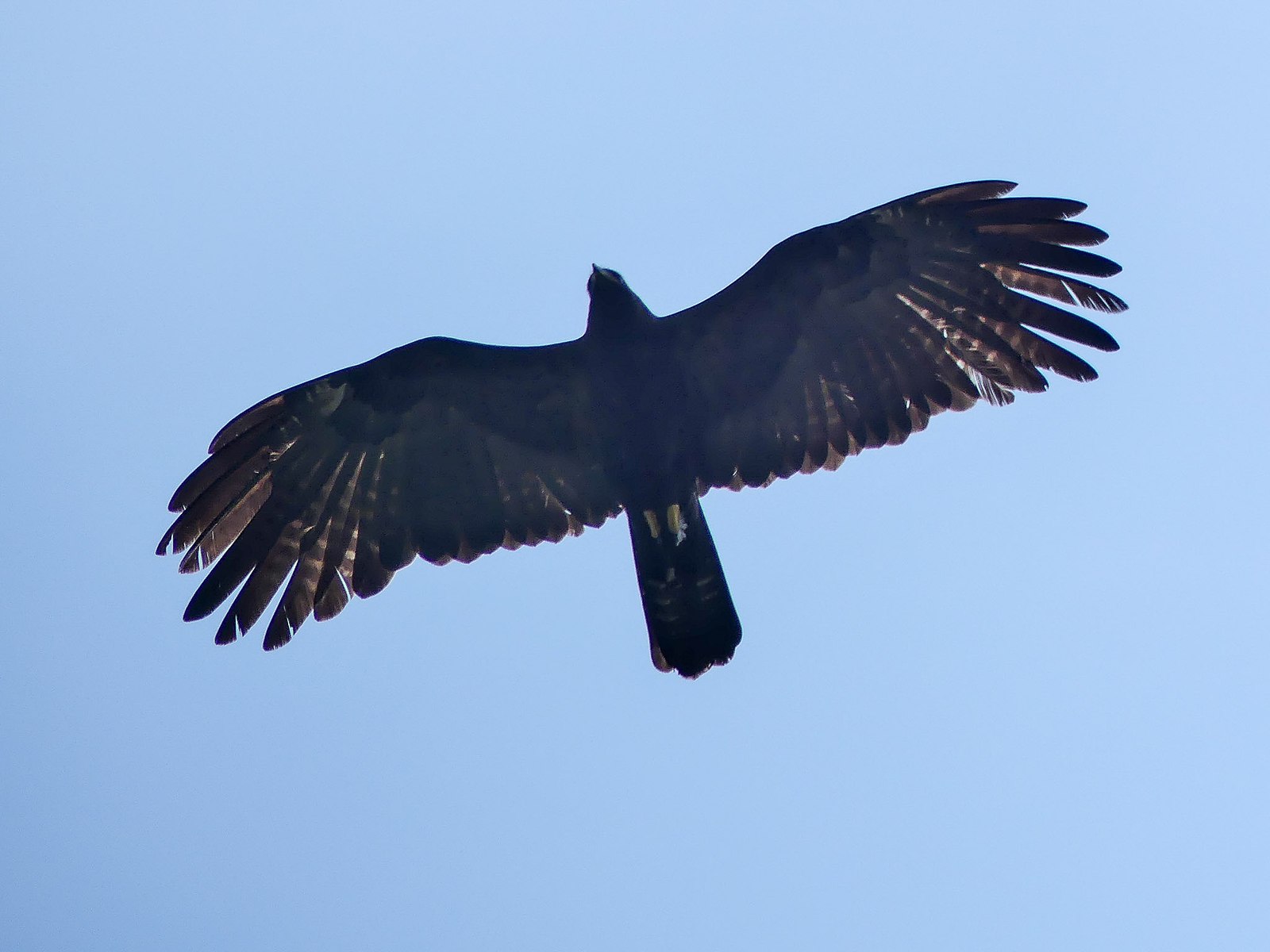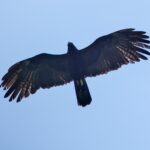Black eagles, also known as Verreaux’s eagles, have several adaptations that help them protect themselves from predators and other threats. From their large size and powerful build to their excellent eyesight and agility in flight, these majestic birds have developed a range of strategies to ensure their survival.
Impressive Size and Strength
One of the most notable adaptations of the black eagle is its impressive size and muscular build. With a wingspan of up to 8 feet and a body weight of up to 14 pounds, these birds are among the largest and most powerful birds of prey in Africa. Their large size and powerful talons and beaks make them formidable opponents for any potential predators, allowing them to defend themselves effectively.
Exceptional Eyesight
 Image source: Black Eagle by Mike Prince
Image source: Black Eagle by Mike Prince
Black eagles possess some of the sharpest vision of any bird, with visual acuity up to eight times greater than that of humans. This exceptional eyesight allows them to spot potential threats from a great distance, giving them ample time to react and defend themselves. Their keen eyes enable them to detect even the smallest movements, making it difficult for predators to sneak up on them.
Agile Flight Maneuvers
In addition to their size and strength, black eagles are also incredibly agile in flight. They are capable of making sharp turns and sudden changes in direction with ease, allowing them to evade potential threats and avoid collisions with obstacles such as trees and power lines. This agility also helps them pursue and capture prey with great speed and precision, further enhancing their ability to protect themselves.
Nesting in Inaccessible Locations
Black eagles often choose to nest in inaccessible locations, such as on cliff ledges or in the tops of tall trees. This makes it difficult for predators to reach their nests and attack their young, providing an additional layer of protection for the eagles’ offspring.
Secretive and Elusive Behavior
Black eagles are known to be very secretive and elusive, avoiding contact with humans and other potential threats whenever possible. This behavioral adaptation helps them minimize their exposure to danger and reduces the likelihood of encountering predators or other threats.
Threats and Conservation Efforts
Despite their impressive adaptations, black eagles do face a number of threats from human activities, including habitat loss, poisoning, and shooting. These threats have led to declines in black eagle populations in some areas, and they are currently listed as a species of Least Concern by the International Union for Conservation of Nature (IUCN).
However, conservation efforts are underway to protect black eagles and their habitats. Organizations like The Peregrine Fund are working to monitor and study these birds, as well as to raise awareness and support for their protection. With continued conservation efforts, the future of the black eagle may remain secure.
References:
– The Peregrine Fund. (n.d.). Black Hawk-eagle. Retrieved from https://peregrinefund.org/explore-raptors-species/eagles/black-hawk-eagle
– The Peregrine Fund. (n.d.). Black-chested Snake-eagle. Retrieved from https://peregrinefund.org/explore-raptors-species/eagles/black-chested-snake-eagle
– Journey North. (n.d.). Bald Eagles: Nestlings. Retrieved from https://journeynorth.org/tm/eagle/annual/facts_nestlings.html
– Owlcation. (2023, December 12). A Guide to Africa’s Black Eagle (Verreaux’s Eagle). Retrieved from https://owlcation.com/stem/Birds-of-Prey-The-Verreauxs-Eagle
– Wikipedia. (n.d.). Crowned eagle. Retrieved from https://en.wikipedia.org/wiki/Crowned_eagle

